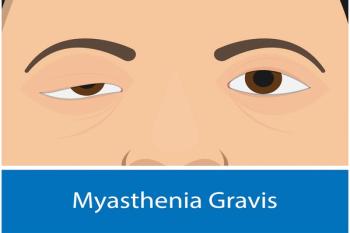
Unique Case: HCC With No Cirrhosis—and “Hidden” CLL/SLL
A 77-year-old man had no risk factors for hepatocellular carcinoma (HCC), but he was nonetheless found to have it. Along the way, he was also diagnosed with previously undetected chronic lymphocytic leukemia/small lymphocytic lymphoma (CLL/SLL).
A 77-year-old man’s case is unlike any before, according to his physicians writing in
Two patients have been described in the literature with concurrent HCC and CLL/SLL with no preexisting liver damage, but in both, CLL/SLL was diagnosed well before HCC.2,3 Several other reports describe patients with chronic liver disease before HCC, with coexisting CLL, but no connection has been made yet, reported the authors.
Patient history. The patient is Black and has type 2 diabetes, benign prostatic hyperplasia, hypertension, coronary artery disease, aortic dissection, and atrial fibrillation. He originally sought treatment locally for hematuria; the workup included an abdominal CT scan.
The CT revealed a 2.2-cm lesion in liver segments 7 and 8, and no cirrhosis. Within weeks, an abdominal MRI revealed a 1.7-cm lesion in the right lobe with rapid arterial enhancement, washout, and a questionable pseudo-capsule. Physicians believed it represented an adenoma vs an atypical hemangioma.
His viral hepatitis serologies, liver chemistry measurements, and alpha fetoprotein level were unremarkable. He had no significant alcohol or recreational drug use.
Seven months later, the patient’s follow-up abdominal MRI with contrast showed the liver lesion’s growth to 5.6 × 4.3 cm. The liver was diffusely steatotic, with prominent lymph nodes in the porta hepatis; other signs consistent with HCC were present.
At that point, the patient was referred to the authors’ institution (the University of Iowa Hospitals & Clinics in Iowa City). His enlarged, reactive lymph nodes were confirmed. Soon after, he underwent an open right hepatectomy of segments 7 and 8. The surgical pathology was consistent with moderately differentiated HCC.
The Iowa team incidentally found portal-caval involvement of CLL/SLL and mild steatosis (10%), but no hepatic fibrosis. “Before this incidental finding, the patient did not have objective evidence suggestive of CLL/SLL including leuko/lymphocytosis, anemia, thrombocytopenia, splenomegaly, or nodal involvement on imaging,” declared the authors.
The patient was then referred to the Hematology/Oncology Department, where his care team decided to closely monitor the CLL/SLL and HCC. A repeat abdominal MRI 15 months post surgery revealed multiple new enhancing nodules in segments 2, 6, and 7, consistent with multifocal HCC, as well as new prominent axillary, mesenteric, and retroperitoneal lymph nodes related to CLL/SLL.
At that point, for his multifocal HCC, he began chemotherapy with lenvatinib but stopped 4 months later due to significant fatigue and physical decline. Shortly thereafter, another abdominal MRI showed that all HCC lesions had grown over the previous 6 months.
The patient has received pembrolizumab therapy since then, with no significant adverse effects, and his CLL/SLL is still being watched closely.
HCC plus CLL/SLL. The authors say no strong evidence exists of any genetic mutations common both to individuals with HCC and those with CLL/SLL.
“[A] potential hypothesis involves increased inflammatory cells from CLL/SLL in the liver leading to an inflammatory milieu, which ultimately leads to HCC,” they wrote.
This patient developed lymphadenopathy rapidly after tissue diagnosis, but it’s hard to know whether he had quiescent disease or rapid onset of disease that was incidentally found.
“If he had rapid onset of CLL/SLL, this may argue more toward a common oncogenic cellular pathway between CLL/SLL and HCC,” they concluded. And although much more detective work remains, “evidence [exists] that both cancers are related to the extracellular signal-regulated kinase pathway.”
References
1. Tu BH, Khalyfa A, Bellizzi AM, Tanaaka T. Hepatocellular carcinoma with chronic lymphocytic leukemia/small lymphocytic lymphoma in the absence of cirrhosis. ACG Case Rep J. 2024;11(5):e01348.doi:10.14309/crj.0000000000001348
2. Heidecke S, Stippel DL, Hoelscher AH, Wedemeyer I, Dienes HP, Drebber U. Simultaneous occurrence of a hepatocellular carcinoma and a hepatic non-Hodgkin’s lymphoma infiltration. World J Hepatol. 2010;2(6):246-250. doi:10.4254/wjh.v2.i6.246
3. Mogrovejo E, Gjeorgjievski M, Cappell MS. Coexistence of hepatocellular carcinoma and small lymphocytic lymphoma in the absence of pre-damaged liver parenchyma: case report and review of literature. Am J Gastroenterol. 2015;110:S385.
Newsletter
Stay ahead of policy, cost, and value—subscribe to AJMC for expert insights at the intersection of clinical care and health economics.













































